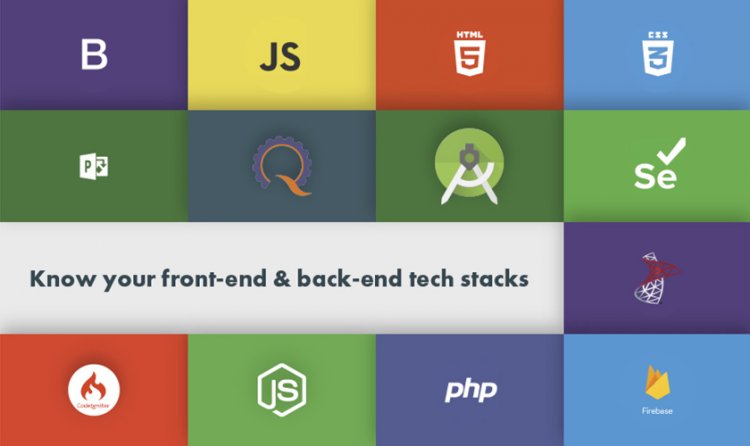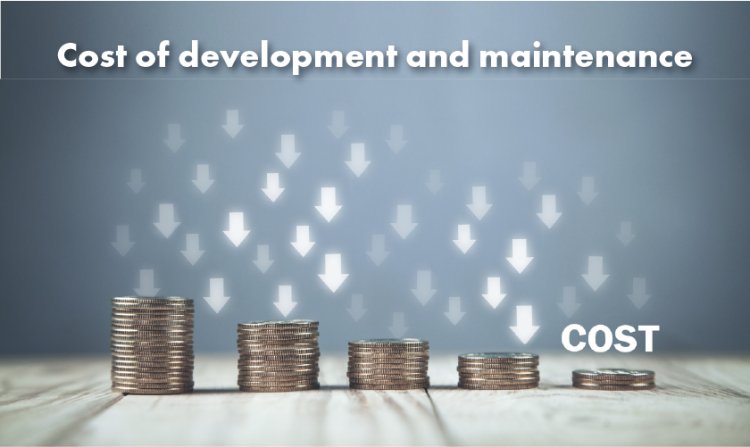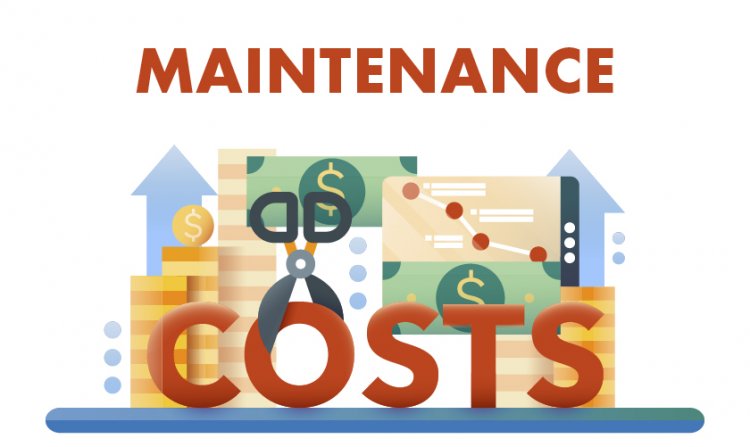
TABLE OF CONTENTS
Choosing a Tech Stack for Your Web Application
Building a successful web application entails many sequential steps, and choosing technology is the foremost and most important one. Theoretically, it all depends on your budget and your project requirement: web app development requires technologies such as a hosting server, a reliable database to store your data, and a project appropriate programming language to code. All of these combine to form a technology stack for your web application.
Choosing the right tech stack lets you design a secure, stable, and workable final product that is not only compatible with your customers but also scales your business in the long run. Let's discuss how you can choose the tech stack for your web applications.
First, understand what a technology stack is
As mentioned earlier, a tech stack is the combination of technologies and tools to develop your web application. These stacks may include basic frameworks, databases, and programming languages. The technology stack is further divided into two categories: front-end and back-end. Both components are crucial when you want to build a web application. The tools that power front-end and back-end development are different, but they synchronize with each other to work as a whole.

Know your front-end and back-end tech stacks
Front-end tech stack
The front-end is the client-side of the web application and refers to the user interface. It includes graphics, layout, visuals, buttons, etc. A user-friendly interface is necessary for a successful front-end and you should know what tech stack is best for front-end development. Some popularly used programming languages and tools are as follows:
HTML (Hypertext Markup Language)
It is the basic building block of your website that instructs the web browser to display the content of webpages.
CSS (Cascading Style Sheets)
CSS styles and formats the content and works with HTML to determine the content size, fonts, color, and front-end static elements.
JavaScript
JavaScript is used to make your web applications interactive, dynamic, and modern looking.
PHP
PHP stands for Hypertext Preprocessor and is an easy to code programming language used for web development and creating dynamic web pages.
Front-end frameworks
There are a lot of front-end frameworks and libraries that help you develop web apps quickly, such as Bootstrap, Angular, Vue.js, React, JQuery, which are most popular. These frameworks and libraries let you customize your front-end with easy to use components.
Back-end tech stack
Back-end is the server-side component of any web application and comprises of a database, storage, server app, and server as well. To develop the back-end, you require the following tech stacks:
Programming languages
Back-end programming languages develop business logic. Python, Java, Ruby on Rails, and .Net are some popular programming languages for back-end development.
Webserver
Webserver synchronizes browser and app communication with the back-end server. HTTP and HTTPS are used to complete the process.
Database
The database manages and stores your data MySQL, Apache, Ngnix, MongoDB are some examples.
Web framework
Back-end frameworks provide you with templates, components, and structures to reduce your time to build web applications. These frameworks have tools that automate your web development process, and depend on the language you pick. These frameworks include:
- Ruby on Rails
- NET
- js
- js
How to choose web application tech stacks
When it comes to choosing a reliable tech stack, there is nothing like a one-size-fits-all formula. The decision depends on several factors that you should keep in mind and research well. Consider the following criteria while selecting your tech stack:

Your project's requirements and its type
Before choosing your tech stack, be aware of your project's requirements and its type. A tech stack has various tools to create a web app, so you should know your web application planning to pick appropriate development tools that provide unique benefits for your web app. You can categorize your project into three types, i.e., simple, advanced, and complex.
Simple:
A simple, project MVP is developed using out of the box solutions. Landing pages, and simple e-stores are the best examples.
Advanced:
Advanced web projects may have more functionalities than simple pages, and they are developed using different frameworks: large, online stores are prime examples.
Complex:
Complex web apps have multiple function integration and require various web development technologies and programming languages for development. Your choice of social media networks is a complex project.
Besides categorizing your project, you should also evaluate your application load and data processing. If your application has a huge volume, you will need technologies accordingly. If you are developing an app with audio or video streaming, you have to grab a tech stack that supports processing heavy load. Also, there are apps like social media that require low latency for which you have to use a tech stack that’s compatible.
Cost of development and maintenance

Tech stacks comprising of relatively new technology might land you in trouble when it comes to development cost and maintenance. So while choosing one, keep in mind its popularity and effectiveness. There are two prime factors on which your tech stack depends:
Developers
It is hard to find app developers who can work on every latest tool technology to develop your web application. So before choosing any latest developing tool, keep in mind the salary of the developer you have chosen or are in the process of negotiations with. The best solution is to pick a popular tech stack so that you can easily find a properly experienced app developer for it. You won’t have to worry about finding an affordable app developer in doing so.
Maintenance cost

The other side of developing a web application is the maintenance cost. Evaluate the cost of maintaining your app. You can opt to use free and open-source technologies to reduce the maintenance cost. For instance, the Ruby on Rails framework lets you use the tech stack with an MIT license so that you can maintain your app without costing you much.
Scalability
Your goal while developing a web application should be your app’s future growth. Scalability is the factor directly related to it. Usually, companies develop the MVP and test its market response to add advanced features accordingly. It's wise to choose a tech stack that has frameworks and components compatible with your app’s scalability. It is better to avoid switching the tech stack when your app is growing in the market. You can conveniently achieve scalability through toolsets like ASP.NET, Django, and Ruby on Rails, etc.
Security
Digitization brings in cyber-attacks with it. Data breaching and hacking is a norm and will be the biggest threat to your web app as well. According to Juniper Research, data breaches results in an annual financial loss of $2.1 trillion by 2019. That is why you should keep the cybersecurity of your web application in mind while choosing a development tech stack and ensure the app development company you work with knows this is your top priority.
Your web application data and user's data should be 100% secured. So choose a tech stack that can provide better security support against pesky cyber-attacks. For instance, Django, RoR, Laravel, Flask are the best tech stacks as far as security is concerned.
Time to market

Time to market is crucial when it comes to competition. The earlier you develop your web app, the higher the probability of you moving ahead of your competitors. Similarly, shorter development times result in lower development costs and an earlier time to market or TTM in short. Time to market often depends on the tech stack you select.
So consider these things while choosing a tech stack for a perfect TTM
- The stack should provide you out-of-the-box solutions to add enhanced functions and features for scalability.
- The tech stack should provide you support for third-party solution integration.
- You should know your app developer’s ability to code using your chosen stack. Make sure your developer has the expertise to maintain your web app after its launch.
Conclusion
Your web application's success relies heavily on the tech stack you use in development. Without inspecting the project needs, it is impossible to point out which one is the most appropriate for you. You can also choose ready-to-use or develop your own tech stack according to your goals, project needs, and niche. And if you are stuck with your decision and want an expert opinion or don't have an idea about what tech stack to choose for your web application, reach out to Appedology. We are a top app development company that serves companies, businesses, and individuals with digital solutions, investing our best efforts into their success. You can also get consultancy regarding your web app development and tech stacks for seamless project completion.











let’s get started!
Get in touch today. We’re ready!